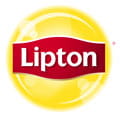What’s the Difference Between Sugar Free and No Added Sugar?

Making sense of sugar claims on the package
Foods and drinks sometimes seem to almost talk to us from the store shelves. “Psst, watching your weight? Check me out!” “Cutting back on sugar? I’m the one you want!”
Food packages often include statements about health benefits or nutritional quality separate from the required Nutrition Facts label. You may be wondering how to make sense of it all. Are these products healthier? Should you eat more of them?
The answer: It’s complicated. Especially when it comes to sugar content claims.
What’s in a label?
The Food & Drug Administration regulates health and nutrient content claims on food and drink packaging. In 2016, the FDA revised the Nutrition Facts label to list both “Total Sugars” and “Added Sugars.” Before this it was hard to tell how much were naturally occurring vs. added sugar. This made it harder for people to make health choices based on the label information. Food and drink companies are still changing to the new label format, so you may not see the updated label on every package yet. Most will begin using the new label format in 2020, but some food makers have until mid-2021 to make the switch.
There is some evidence that the change could have a massive impact not only on people’s ability to make healthier choices but also on how much added sugar the food industry puts in our food. In any case, reading the Nutrition Facts label and ingredients list on packaged foods is a good way to know and limit how much added sugar you and your family eat.
But what about other types of sugar content claims, such as “no added sugar” almost shouted from the front of the package? These can be helpful, but only if you understand what they really mean. So let’s define a few common terms.
What do sugar content claims mean?
According to the FDA, nutrient content claims describe the level of a nutrient (such as sugar) in the product using terms such as “free” and “low” or compare the level of a nutrient in a product to that of another product using terms such as “reduced” and “less.” For example:
-
Sugar Free
One serving* contains less than 0.5 grams of sugars, both natural and added. (Also: free of sugar, sugarless, no sugar, zero sugar, or trivial source of sugar.)
-
Reduced Sugar
Has at least 25% less sugars than the regular version of the product. (Also: less sugar, low in sugar or lower sugar.)
-
No Added Sugar
No sugar or ingredient containing sugar was added during processing or packaging. (Also: without added sugar or no sugar added.)
* the labeled serving size and/or the reference amount customarily consumed (RACC)
Products with sugar claims often contain a sugar substitute or low-calorie sweetener. This is how they can contain less sugars but maintain the sweetness expected in the food or drink.
But just because a product has a sugar content claim doesn’t mean it’s good for you. For example, a sugary breakfast cereal can claim it has “reduced sugar” (reduced from what?) or that it’s “lightly sweetened” (a meaningless, unregulated term). This can fool health-conscious shoppers into thinking it’s a better choice.
Researchers in one study were surprised to find that some products with low-nutrient claims actually had more of that nutrient than products without those claims. Or a product might have less of one unhealthy nutrient but too much of another — meaning overall, it’s not a better choice. The researchers concluded that it can be misleading to make a decision about a product based on a package claim.
How to make healthier choices
When you see a sugar content claim on a product, use information on the Nutrition Facts label and ingredients list to make sure it’s a healthier choice. Know the American Heart Association’s recommended daily limit for added sugars. And follow these general tips:
- Build an overall healthy eating pattern, including plenty of fruits and vegetables.
- Eat mostly nutrient-dense foods, which tend to be lower in added sugars.
- Choose products with less added sugars.
One of the best ways to reduce sugars in your diet is to limit sugary drinks, including soda, sweet tea, coffee drinks, sports and energy drinks, and sweet fruit juices like apple and grape. Make water your default choice.
Bottom line
If you eat a lot of sweets or drink sugary beverages regularly, finding replacement products with less sugar can be a good way to start cutting back and improving your health. Switch to unsweetened products when possible. You can always add a bit of natural sweetener – or naturally sweet fruit – to get just the right amount of sweetness without all the extra calories and added sugars.
Over time, you won’t even miss them, no matter how loudly they call to you from the grocery shelves!






